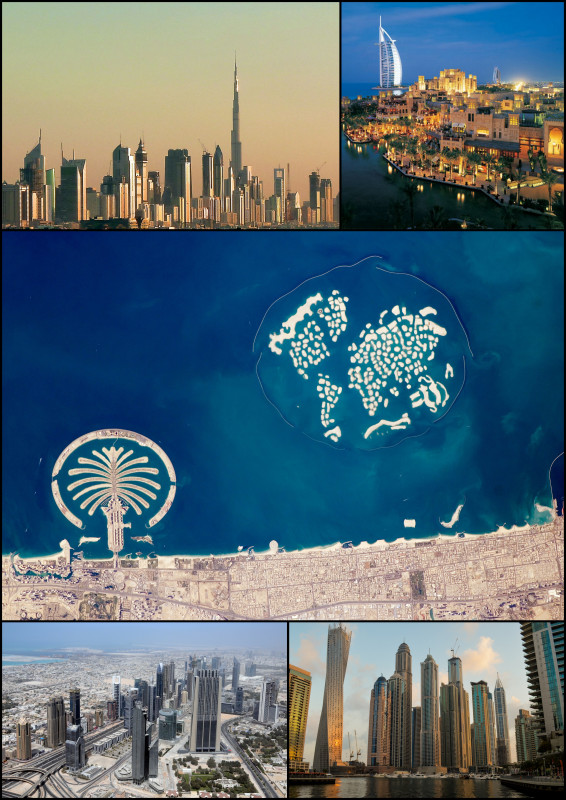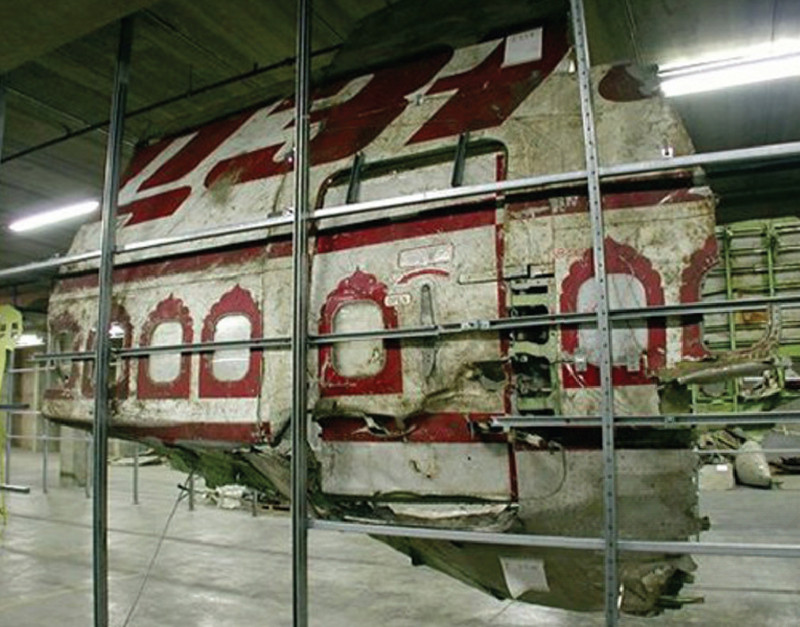Dubai International Airport (DXB) is the primary airport serving Dubai, UAE, and is the world's busiest for international passenger traffic as of 2024. It's also the busiest in the Middle East, second-busiest overall globally, and leads in Airbus A380 and Boeing 777 movements. DXB boasts the highest average number of passengers per flight. In 2024, it handled over 92 million passengers, 2.2 million tonnes of cargo, and 440,000 aircraft movements.
July 1937: Air agreement signed for flying boat base
In July 1937, an air agreement was signed to establish a flying boat base for Imperial Airways aircraft, marking the beginning of civil aviation in Dubai.
February 1938: Increased Flying Boat Traffic
By February 1938, the number of flying boats operating weekly had increased to four.
1959: Construction of airport ordered
In 1959, Sheikh Rashid bin Saeed Al Maktoum, the ruler of Dubai, ordered the construction of Dubai International Airport.
September 1960: Airport Officially Opened
Dubai International Airport officially opened on September 30, 1960, capable of handling aircraft the size of a Douglas DC-3 on a 1,800-meter runway.
May 1963: Construction of asphalt runway started
In May 1963, construction began on a 2,800-metre asphalt runway at Dubai International Airport.
May 1965: New Runway and Terminal Extensions Opened
In May 1965, the new 2,800-metre asphalt runway, along with extensions to the terminal building and hangars, opened at Dubai International Airport.
August 1965: Lighting System Installation Completed
In August 1965, the installation of the lighting system was completed at Dubai International Airport.
May 1966: First Big Jets Visited
On May 15, 1966, Dubai International Airport celebrated its inauguration with visits from the first big jets, De Havilland Comets of Middle East Airlines and Kuwait Airways.
1969: Airport Served by 9 Airlines
By 1969, Dubai International Airport was served by 9 airlines serving approximately 20 destinations.
December 1971: Completion of Airport Fire Station Construction
In December 1971, the construction of the Airport Fire Station and the installation of the generators were completed.
March 1972: Airport Fire Station Operational
In March 1972, the Airport Fire Station became fully operational.
June 1973: Inauguration of Long-range Surveillance System
On June 19, 1973, the ruler of Dubai inaugurated the Long-range Surveillance System at the airport.
1976: Expansion of Airport Fire Services
In 1976, to accommodate the expansion of the Airport Fire Services, a hangar-style building was made available, and a new building was constructed for the Airport Maintenance Engineer, Electronics Engineering section, and Stores unit.
December 1978: Expansion and Refurbishment of Airport Restaurant and Transit Lounge
In December 1978, the expansion and refurbishment of the Airport Restaurant and Transit Lounge, including a new kitchen, were completed.
December 23, 1980: Membership of Airports Council International (ACI)
On December 23, 1980, Dubai International Airport became an ordinary member of the Airports Council International (ACI).
April 1984: Opening of New Runway
In April 1984, a new runway equipped with advanced meteorological, airfield lighting, and instrument landing systems opened, giving Dubai International Airport a Category II classification.
1997: Launch of New Development Master Plan
In 1997, the new development master plan was launched at Dubai International Airport.
1998: Opening of Terminal 2
In 1998, Terminal 2 opened as the first step of phase 1 of the new development master plan.
1998: Terminal 2 built
Terminal 2 was built in 1998.
April 2000: Opening of Sheikh Rashid Terminal (Concourse 1)
In April 2000, Concourse 1, named Sheikh Rashid Terminal, opened, featuring a hotel, business center, health club and other facilities.
2000: Concourse C opened
In 2000, Concourse C was opened and used to be the largest concourse at Dubai International Airport before Concourse B in Terminal 3 opened.
2000: Emirates Airlines Employee Count
In 2000, Emirates Airlines had over 2000 Airport Services employees serving Dubai International Airport.
2003: Runway Reconfiguration, Aprons, and Taxiways Expansion
Between 2003 and 2004, as part of phase 2, runway reconfiguration, aprons, and taxiways were expanded and strengthened.
2003: Airport Tunnel Built
In 2003, the Airport Tunnel, a road tunnel underneath one of the runways, was built at Dubai International Airport.
2004: Plans for cargo mega terminal
Forecasts in 2004 for cargo growth predicted that additional major cargo handling facilities were needed to satisfy demands and plans were put in place to construct the first stage of the cargo mega terminal.
2004: Construction of Terminal 3 Began
In 2004, construction of Terminal 3 began as part of phase 2 of the development, with an estimated cost of around $4.55 billion.
2004: Retail Area Upgrades
In 2004, extensive upgrading work commenced on existing retail areas in Terminals 1 and 2 at Dubai International Airport, which subsequently led to increased sales.
2004: Flower center completed
The first phase of Dubai Airport's flower center was completed in 2004 at a cost of $50 million.
2005: Opening of Dubai Flower Centre
In 2005, the Dubai Flower Centre opened to support the import and export of flowers, needing special conditions.
March 2006: Sympathy strike at Dubai International Airport
In March 2006, workers building a new terminal at Dubai International Airport went on a sympathy strike.
2006: Original Completion Plan
The completion of terminal 3 was originally planned for 2006 but was delayed by two years.
October 2007: Strike at Dubai International Airport
In October 2007, another strike took place at Dubai International Airport, leading to the arrest of four thousand strikers, some of whom were deported.
2007: Airport Reaches Capacity
By 2007, Dubai International Airport had reached its capacity of 33 million passengers per annum.
2007: Next phase of cargo terminal expansion scheduled
Phase 1 of the cargo mega terminal was completed by 2004 and the next phase of expansion was scheduled for completion in late 2007.
2007: Runways expanded for Airbus A380
The runways were expanded in 2007 to accommodate the Airbus A380 which came into service.
February 2008: Stringent Drug Laws
On 11 February 2008, it was reported that Dubai enforces strict drug laws with a minimum penalty of four years for personal use, regardless of the amount found.
May 2008: Topping-out Ceremony
In May 2008, a topping-out ceremony was conducted for Terminal 3.
July 2008: Al Majlis VIP pavilion opened
The Al Majlis VIP pavilion, built exclusively for the Dubai Royal Air Wing, opened on July 1, 2008.
October 2008: Dubai Duty Free Expands Retail Space
In October 2008, Dubai Duty Free doubled its retail space from 7,000 to 15,000 square meters with the opening of the new Emirates Terminal 3.
October 2008: Terminal 3 Became Operational
On October 14, 2008, Terminal 3 became operational, increasing the airport's maximum annual passenger capacity by 47 million.
October 2008: Additional A380-capable gates opened
On October 14, 2008, five more Airbus A380-capable gates were opened at concourse B.
November 2008: Planning for Terminal 4 revealed
On November 14, 2008, the day Emirates completed its phased operations at the new Terminal 3, plans for further expansion of Dubai Airport with the construction of Terminal 4 were revealed.
June 2009: Terminal 2 becomes hub for Air India Express and flydubai
In June 2009, Terminal 2 became the hub of Air India Express and flydubai. The airline's corporate head office is located in the terminal.
August 2009: Dubai Duty Free Ranked #1
As of August 2009, Dubai Duty Free was recognized as the biggest single airport retail operation globally, surpassing London's Heathrow and Seoul's Incheon airports.
September 2009: Dubai Metro Red Line Service Started
On September 9, 2009, the Red Line of Dubai Metro began service, with stations at Terminal 1 and Terminal 3.
2009: Terminal 2 Expansion
In 2009, Terminal 2 expanded its facilities to handle 5 million passengers annually, increasing the airport's total capacity to 62 million passengers.
2009: Al Majlis VIP pavilion customers
In 2009, the Al Majlis VIP pavilion had a total of 43,968 customers and 14,896 movements.
2009: Category III landing system installed
In 2009, the airport installed a Category III landing system, allowing planes to land in low-visibility conditions, such as fog. This system was the first of its kind in the United Arab Emirates.
June 2010: Dubai World Central Airport Opened
Dubai World Central – Al Maktoum International Airport opened on June 27, 2010, with construction expected to finish by 2027.
October 2010: 50th Anniversary
On October 29, 2010, Dubai International Airport marked its 50th anniversary, having served over 402 million passengers and handled over 3.87 million aircraft.
2010: Mobile gates added
By 2010, the airport had added more mobile gates, bringing the total to 28.
2010: Executive Flight Services handled
In 2010, Executive Flight Services (EFS) handled 7,889 aircraft movements and 25,177 passengers.
2010: Al Majlis VIP pavilion customers
In 2010, the Al Majlis VIP pavilion had 47,213 customers and 13,162 movements.
May 2011: Dubai Airport masterplan revealed
In May 2011, Dubai Airports' chief executive, Paul Griffiths, revealed the Dubai Airport masterplan, which included the construction of Concourse D (previously Terminal 4) with a capacity of 15 million passengers.
May 2011: Future Plans Revealed
In May 2011, Dubai International Airport revealed future plans, including the construction of Concourse D for all airlines operating from Concourse C.
September 2011: Green Line Service Started
In September 2011, the Green Line of Dubai Metro began serving the airport's north-eastern area with Terminal 2.
September 2012: Concourse Name Changes
In September 2012, Dubai Airports changed the names of concourses to simplify navigation for passengers: Concourse 1 became Concourse C, Concourse 2 became Concourse B, and Concourse 3 became Concourse A.
September 2012: Terminal 3 to be used by Qantas
On September 6, 2012, it was announced that Terminal 3 would no longer be Emirates-exclusive, as Emirates and Qantas had set up an extensive code-sharing agreement, allowing Qantas to fly in and out of Terminal 3.
2012: Terminal 2 capacity plan
By 2012, Terminal 2 capacity was planned to bring the total capacity of the airport from the initial 75 million passengers to 80 million passenger capacity.
2012: Planned Construction of Dubai Metro Purple Line
Construction of the Dubai Metro Purple Line, intended to connect Al Maktoum International Airport to Dubai International Airport, was set to begin in 2012.
2012: Dubai Duty Free Annual Sales
In 2012, Dubai Duty Free Company announced annual sales of Dhs5.9 billion (US$1.6 billion), marking a 10 per cent increase compared to the previous year. Dubai Duty Free also recorded more than 23.5 million transactions in 2012.
January 2013: Concourse A opened
Concourse A opened on January 2, 2013, exclusively for handling Emirates A380s.
2013: Terminal 2 capacity
As of 2013, Terminal 2 had a capacity of 10 million passengers.
2013: Expected Project Completions
By 2013, with the completion of various projects, Dubai International Airport expected to handle at least 75-80 million passengers and over 5 million tonnes of cargo.
2013: Passenger Traffic
In 2013, 66.43 million passengers passed through Dubai International Airport.
2013: Renovation for Terminal 1 and Concourse C announced
In 2013, Dubai Airports announced a major renovation for Terminal 1 and Concourse C, which included upgraded baggage systems, replacement of check-in desks, and a more spacious departure hall. Arrivals were also slated for improvements to reduce waiting times.
2013: Runway refurbishment program announced
In 2013, Dubai Airports announced an 80-day runway refurbishment program.
2013: Air Cargo Volume
In 2013, Dubai International Airport handled 2.37 million tonnes of air cargo.
2013: Ultimate Airport Dubai Documentary Series
In 2013, Dubai International Airport was featured in the 10-part documentary series "Ultimate Airport Dubai", which aired on the National Geographic Channel and focused on the everyday operations of the airport.
2013: Capacity Reaches 75 Million
In 2013, Dubai International Airport's capacity reached 75 million passengers with the opening of concourse A and expansion of Terminal 2.
May 2014: Southern runway closed
The southern runway was closed from May 1 to May 31, 2014, as part of an 80-day runway refurbishment program.
July 2014: Runway refurbishment program completed
On July 21, 2014, the 80-day runway refurbishment program that started on May 1, 2014, was completed.
2014: Air Cargo Decrease
In 2014, Dubai International Airport handled 2.37 million tonnes of air cargo, a 3.1 per cent decrease compared to 2013 due to the runway closure and the shifting of cargo flights.
2014: Economic impact
In 2014, Dubai International Airport indirectly supported over 400,000 jobs and contributed over US$26.7 billion to Dubai's economy.
2014: Top Destinations
In 2014, India was Dubai International Airport's biggest destination with 8.91 million passengers, followed by the UK, Saudi Arabia, and Pakistan. London Heathrow was the top city destination, with 2,626,357 passengers.
2014: Passenger Growth Slows
In 2014, passenger traffic at Dubai International Airport grew by 7.5%, with 70.48 million passengers, a slowdown attributed to the 80-day runway resurfacing project between May and July.
2014: Ultimate Airport Dubai Season 2
In 2014, the documentary series 'Ultimate Airport Dubai' returned for its second season, continuing to showcase the daily operations of the airport.
2015: Airport capacity target
By 2015, extensions to Terminal 3 and the planned Terminal 4 aimed to bring the airport's capacity to 80–90 million passengers a year.
2015: Renovation for Terminal 1 and Concourse C completed
By the middle of 2015, the renovation of Terminal 1 and Concourse C, announced in 2013, was completed.
2015: Ultimate Airport Dubai Season 3
In 2015, the documentary series 'Ultimate Airport Dubai' returned for its third season.
February 2016: Concourse D opens
Concourse D officially opened on Wednesday, February 24, 2016, with the first British Airways flight arriving at gate D8.
2016: Automated people mover to Concourse D
After early 2016, with the completion of Concourse D's construction, an automated people mover was established between Concourse D and Terminal 1.
2016: Concourse C becomes part of Terminal 3
In 2016, after Concourse D opened, Concourse C became part of Terminal 3.
2016: Concourse D Opening
The opening of Concourse D was expected in early 2016, bringing the total capacity of Dubai International Airport to over 90 million passengers.
December 2018: One Billionth Passenger
On December 20, 2018, Dubai International Airport celebrated serving its one billionth passenger.
2018: Cargo mega terminal ability target
By 2018, the cargo mega terminal was planned to have the ability to handle three million tons of freight.
2018: Houthi Rebel Drone Attack Claim
In 2018, the Houthi rebel group claimed responsibility for a drone attack on Dubai Airport, but Dubai Airports denied any interruption to operations, stating that Dubai International (DXB) was operating as normal.
2018: Expected Completion of Cargo Mega Terminal
The Cargo Mega Terminal, with a capacity to handle 3 million tonnes of cargo annually, was expected to be completed no later than 2018.
2018: Target capacity of the airport
The Dubai Airport masterplan aimed to increase the total capacity of the airport to 90 million passengers by 2018 with the construction of Concourse D.
April 2019: Southern runway closure
Dubai Airport planned to close the southern runway (12R/30L) for complete resurfacing and replacement of the airfield lighting and supporting infrastructure during a 45-day period from April 16, 2019, to May 30, 2019.
May 2019: Southern runway closure
Dubai Airport planned to close the southern runway (12R/30L) for complete resurfacing and replacement of the airfield lighting and supporting infrastructure during a 45-day period from April 16, 2019, to May 30, 2019.
July 2019: Installation of largest solar energy system
In July 2019, Dubai International Airport installed the largest solar energy system in the region's airports.
2020: Passenger Traffic Falls
In 2020, Dubai International Airport's first quarter passenger traffic declined by 67.8%, reaching 5.75 million, even lower than the same quarter of the previous year.
2020: Projected passenger numbers
The Dubai Airport masterplan projected that by 2020, passenger numbers at Dubai International Airport would reach 98.5 million and cargo volumes would exceed 4.1 million tonnes.
June 2021: Reopening of Concourse D and Terminal 1
On June 24, 2021, Concourse D and Terminal 1 reopened after being closed for a year due to the COVID-19 pandemic.
2022: Passenger Numbers Reach 66 Million
In 2022, Dubai International Airport experienced a strong recovery, growing its customer base and reaching 66 million annual passengers, outpacing annual forecasts.
March 2023: United begins services from Newark to Dubai
In March 2023, United began services from Newark to Dubai, operating out of Terminal 3.
April 2024: Airport Submerged by Floods
In April 2024, the airport was submerged in water by floods and suffered extensive damage.
April 2024: Al Maktoum International Airport Expansion Announcement
On April 28, 2024, the expansion of Al Maktoum International Airport (DWC) was announced, leading to the future shutdown of Dubai International Airport (DXB) once DWC's expansion is completed by 2035.
December 2024: Expansion Plans Highlighted
In December 2024, CEO Paul Griffiths discussed Dubai International Airport's expansion plans, including advanced technologies and the $35 billion expansion of Dubai World Central.
2024: World's busiest airport by international passenger traffic
In 2024, Dubai International Airport was the world's busiest airport by international passenger traffic, the busiest in the Middle East, and the second-busiest globally by passenger traffic. It handled over 92 million passengers, 2.2 million tonnes of cargo, and over 440,000 aircraft movements during the year 2024. It also ranked as the busiest airport for Airbus A380 and Boeing 777 movements and had the highest average number of passengers per flight.
January 2025: Weekly Flights
As of January 2025, over 8,500 weekly flights are operated by more than 100 airlines to over 270 destinations across all inhabited continents.
Mentioned in this timeline
Saudi Arabia officially the Kingdom of Saudi Arabia KSA is...
India officially the Republic of India is a South Asian...

Dubai is the most populous city in the United Arab...

Boeing is a multinational corporation that designs manufactures and sells...
Pakistan officially the Islamic Republic of Pakistan is a South...

Fire is a rapid oxidation process specifically combustion that releases...
Trending
23 minutes ago Carson Branstine stuns Samsonova in WTA debut at 's-Hertogenbosch: A qualifier's triumph.

23 minutes ago Yung Miami: Diddy's daughters dinner, trolls backlash, and BET Awards attire critique.

24 minutes ago Air India Flight 182 Crashes Near Ahmedabad Airport En Route to London
1 hour ago Erie Insurance Faces Cyberattack, Works with Experts to Resolve Network Outage

1 hour ago Katie Holmes stuns at Tony Awards 2025 in vibrant pink and green outfit.

1 hour ago IndiGo Flight Honors BSF Jawan's Bravery in Operation Sindoor with Applause.
Popular

Greta Thunberg is a Swedish climate activist who gained international...

Thomas Douglas Homan is an American law enforcement officer and...

Cristiano Ronaldo often called CR is a Portuguese professional footballer...

Playboi Carti born Jordan Terrell Carter is an American rapper...

Gavin Newsom is an American politician and businessman currently serving...

Emma Corrin is an English actor best known for portraying...